Optimized on-page SEO is an effective method for improving the organic reach of your website.
There are various software tools available that can assist with on-page SEO, including popular options like GrowthBar, Screaming Frog, Clearscope, as well as Google’s free tools Search Console and Lighthouse Audit.
On-page SEO tools have various functions, such as running SEO audits, managing internal linking, and identifying content gaps, which can contribute to increased rankings.
Screaming Frog is widely regarded as a top on-page technical tool.
GrowthBar is widely recognized as a top on-page content tool.
On-page SEO optimization involves considering various factors, and choosing the most effective tools to achieve your goals can be challenging.
In this article, we will provide information about the 9 best on-page SEO tools, including use cases, pricing information, and unbiased reviews.
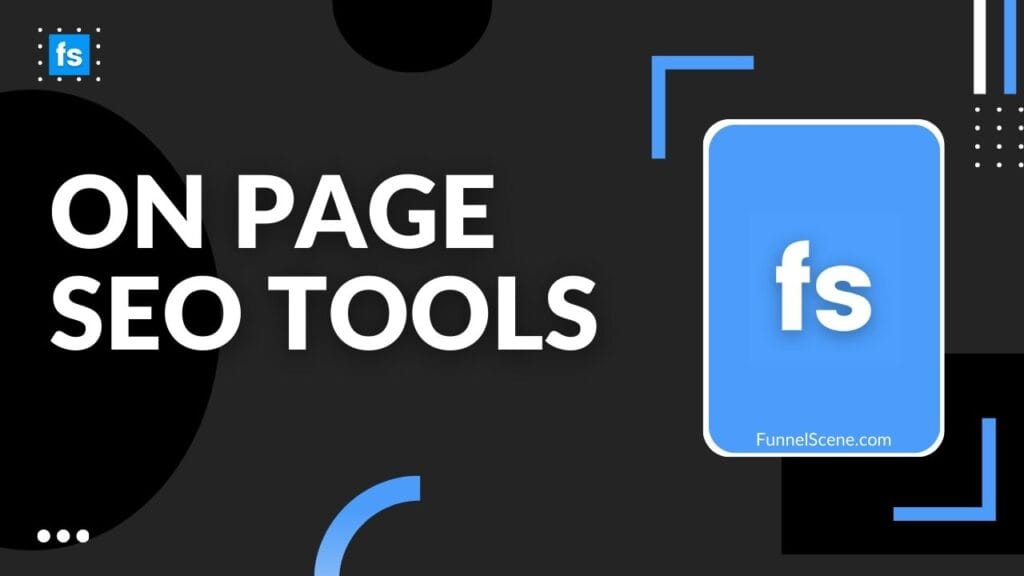
What is On-Page SEO?
On-page SEO involves optimizing the visible components of your website, which includes:
- Technical factors such as site speed and search engine crawlability are important considerations.
- Elements such as title tags, keyword usage, and readability are important in content.
- Strategic decisions include utilizing appropriate URLs, meeting search intent, and optimizing your site for UX/UI.
Off-page SEO focuses on factors that are external or indirectly related, such as backlinks and content distribution through social media and PR. On the other hand, on-page SEO refers specifically t the elements that are visible on your website and directly impact its optimization.
Unlock the secrets of on-page SEO optimization in my exclusive video! Discover unique tips and tricks that you won’t find anywhere else on the web. Don’t miss out!
Which are the Best On-Page SEO Tools?
Analyzing the Google algorithm can be a demanding task, particularly with its enhanced focus on content that effectively fulfills a user’s intent. I will evaluate the top on-page SEO tools based on their capacity to assist you in leveraging this algorithm to your advantage, resulting in increased traffic and business growth.
The information provided includes features, use cases, pricing information, and unbiased reviews from G2.
1. GrowthBar: best for content optimization
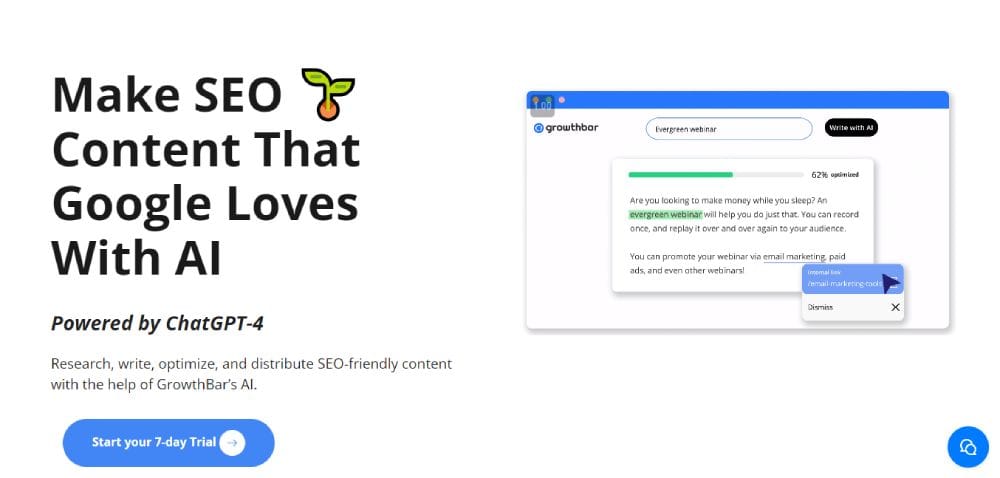
GrowthBar is highly regarded as the top-rated AI writing and optimization tool on G2. SEO professionals appreciate GrowthBar for its ability to facilitate the creation of long-form content using AI or optimize existing blog posts to align with on-page best practices.
GrowthBar’s AI and proprietary algorithms are trained on a vast amount of data, including books, research texts, and websites. This enables their online software tool, which assists in finding organic ways of incorporating SEO keywords and creating content that resonates with both Google and your audience.
GrowthBar is a top choice for SEOs who prioritize content in their strategy. If you are producing a significant amount of content that requires Google optimization, this is the solution for you.
Features:
- AI writing technology includes a first draft builder that can generate a blog post of 1,500+ words in just a few clicks.
- Blog posts are optimized for factors such as word count, keyword usage, optimal URLs, readability, and more.
- The post provides recommendations for internal linking and other SEO optimizations.
- The keyword metrics include related keywords, search volume, difficulty score, “people also ask” questions, and a rank tracker to monitor your optimizations.
- The platform is available in over 20 languages and is used in more than 20 countries.
G2 Score: 4.9/5
Pricing: GrowthBar offers a free 5-day trial with subsequent monthly pricing ranging from $29 to $129, depending on the package chosen (Standard, Pro, or Agency). Additionally, GrowthBar provides a 100% money-back guarantee and the trial is free to try.
2. Google Search Console: best free on-page SEO tool
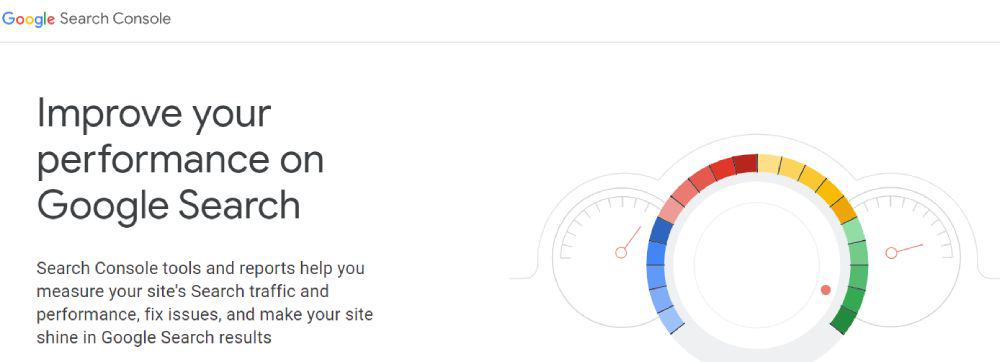
Google Search console is a SEO tool from Google. It allows you to monitor your website’s performance in the Google SERPs. It doesn’t help with keyword selection or content creation, but it does show you the indexing and representation of your site by Google. It can also track keyword rankings, identify technical issues, and highlight anomalies in your SEO data. The best part is that it’s free.
Examining the placement and perception of your website online can provide valuable insights on how to capture attention and enhance your ranking. Additionally, Search Console offers various other functionalities.
It is recommended that website owners install Google Search Console as it provides valuable insights into any issues and offers a deeper understanding of organic web traffic. Furthermore, it is the only tool that directly connects to website data, ensuring a high level of accuracy.
Features:
- The data includes information on clicks, impressions, and keyword rank for all the keywords you are currently ranked for, as well as historical data.
- It is important to identify indexing issues, 404 errors, and broken links.
- There are options to submit an XML sitemap or manually index pages.
- View page level metrics to gain insight into the search terms that your site’s pages are ranking for.
- Issues can be identified as a result of manual penalties or Google algorithm updates.
G2 Score: 4.7/5
Pricing: Free
3. Yoast: best for WordPress
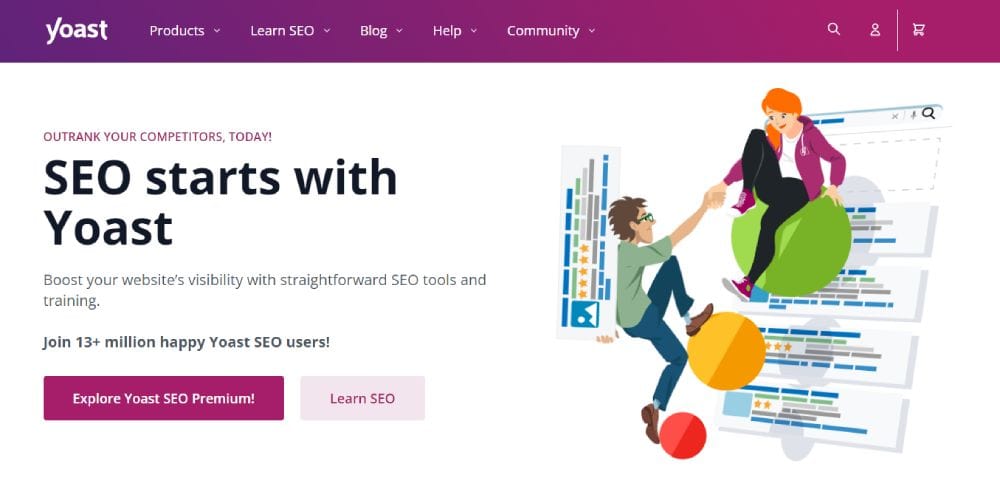
When compiling a list of the best on-page SEO tools, it is important to include the software that WordPress considers its top SEO plug-in.
Hundreds of thousands of businesses use Yoast to optimize on-page SEO. The tool is a simple plugin in WordPress. It allows site owners to improve SEO through meta tags, canonical URLs, 301 redirects, keyword density, and more. Yoast has title and meta description templates and a preview feature to see how your site appears in Google search results. I have used Yoast for years on my WordPress sites and it is one of the top on-page SEO tools for its price.
Yoast is available for download directly from the WordPress plugin marketplace. It is a powerful tool because it takes into account the specific context of your site and provides recommendations for optimizations throughout the process.
Features:
- Both post and page-level optimizations should include considerations such as keyword density and readability.
- Title and meta descriptions can be created and optimized.
- Here are some suggestions for internal linking in your posts and pages.
- Implement 301 redirects.
- Enable Schema automation in the WordPress admin panel.
- Yoast Local SEO assists in customizing optimization for a local audience.
- The platform supports a wide range of languages, including Spanish, Portuguese, German, Greek, and Arabic.
- Keyword research is provided by Semrush.
G2 Score: 4.6/5
Pricing: The Yoast SEO for Shopify is available for $19 per month with a 14-day free trial, while the WordPress Plugin offers a free basic version or a premium version for $99 per year.
4. Screaming Frog: best technical SEO tool

creaming Frog is a leading on-page SEO tool for technical optimizations, not the name of an indie rock band.
SEO spiders are commonly known as web crawlers. They are bots that check the indexing of websites for search engines such as Google. In the case of Screaming Frog, they are used to find broken links, audit redirects, and check the page titles and metadata of a website. They are beneficial for both on-page and off-page SEO tasks.
In this article, I have discussed content creation and now I will talk about a tool that is helpful for the technical side of things. This tool, Screaming Frog, allows you to check for SEO issues, duplicates, and URL problems that may be hindering your optimization progress. It works by mimicking the Google crawler that is already scanning your website to determine how it should be indexed and listed. This tool provides more in-depth analysis of your on-page SEO and gives you a better understanding of how your website is being represented and what gaps may be holding it back.
Features:
- You can easily identify broken links on a website and export the errors for fixing or sending to a developer.
- The process of auditing involves identifying redirects, chains, loops, and upload URLs for site migration.
- Examine page titles and meta descriptions for length, duplication, and any missing information.
- Identify duplicate content, including exact URLs and pages with low content.
- Data can be extracted from web pages using CSS Path, XPath, or regex.
- Please review URL blocking and directives, canonicals, and rel attributes.
- XML Sitemaps and Image XML Sitemaps can be generated with advanced configuration options.
- Integrate with the APIs of Google Analytics, Search Console, and PageSpeed Insights to access user and performance data.
- You can use Chromium WRS to crawl websites with a lot of JavaScript.
- You can use interactive crawl and directory diagrams to visualize site architecture.
- Scheduling crawls and automating exports to Google Sheets or via command line is possible.
- Crawls and staging can be used to track the progress of SEO issues and opportunities.
G2 Score: 4.7/5
Pricing: Screaming Frog is available in both free and paid versions. The paid version, sold as 1-year licenses, costs £199/year or approximately $240 (depending on the exchange rate).
5. Clearscope
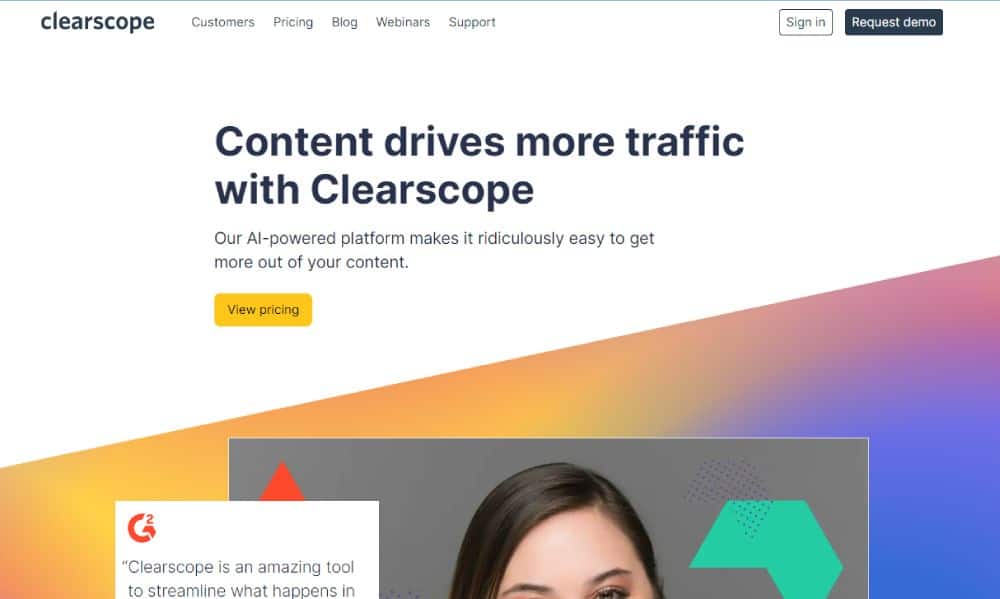
Clearscope is an AI-Powered SEO tool. It uses natural language processing to provide effective recommendations. Clearscope utilizes models from IBM Watson and Google Cloud Natural Language. It helps identify popular search terms and understands the intent behind them. This aligns with Google’s SEO starter guide, which emphasizes engaging content. Understanding why users search for specific things makes it easier to prioritize content.
This on-page SEO tool also allows you to compare your content’s rankings with that of your competitors, providing clear insights into how you’re performing. One of the challenges of optimizing content is the abundance of information on what works and what doesn’t. The best on-page SEO software, such as Clearscope, eliminates the noise and ensures that the content you create will generate traffic.
Features:
- Analysis of competitor content.
- Here is a suggestion for rewriting the sentence using a neutral tone of voice: Chocolate is enjoyable to me.
- The content is assessed in real-time and an overall grade is given.
- Here are some recommendations for optimizing your content, including incorporating additional keywords into your article.
- There is an integration between Google Docs and WordPress.
- There are no limits to sharing and exporting.
- Onboarding and training are provided at no cost.
- The keyword planner tool is used for keyword research.
G2 Score: 4.9/5
Pricing: The “Essentials” pack has a starting price of $170 per month. Custom pricing based on specific needs is available for businesses and enterprises requiring custom or advanced functionality.
6. Surfer SEO
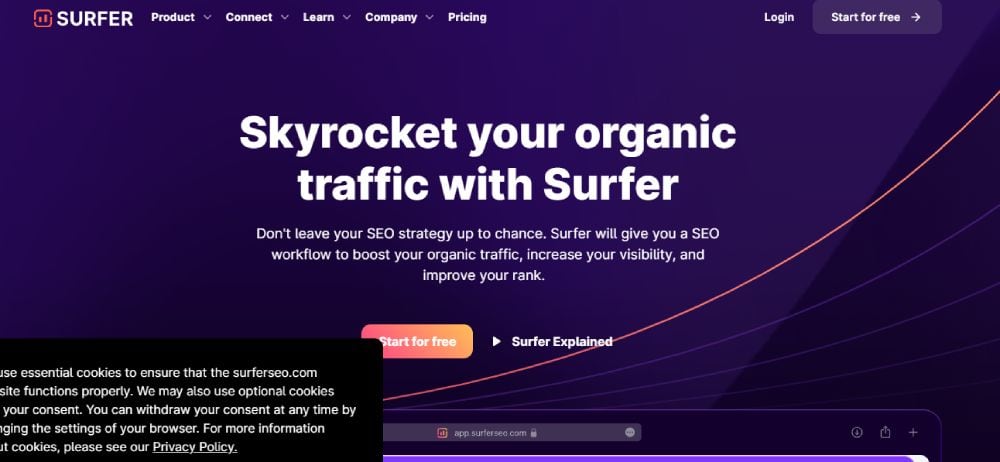
The Surfer SEO platform utilizes AI to provide a variety of SEO-related functions. These functions include keyword research, content planning, SERP analysis, and site auditing. The auditing feature is particularly beneficial for individuals who have an existing website but are experiencing subpar performance and are uncertain about where to begin making improvements.
Surfer SEO’s content editor is highly praised for being user-friendly and is considered one of the top on-page SEO tools. It not only makes content planning easy but also provides features to compare your content with competitors, helping you stay competitive. While Surfer SEO doesn’t generate complete content, it can quickly generate briefs and headlines using their Outline Builder. Like Clearscope and Growthbar, Surfer SEO uses natural language processing (NLP) to create search-friendly content on your desired topics.
Surfer SEO offers a unique feature by extending its functionality to support a wide range of languages, making it a valuable tool for businesses operating internationally.
Features:
- Surfer SEO provides a range of tools for enhancing your website’s search engine ranking, such as optimizing previous blog posts and creating landing pages.
- The platform offers useful tools such as content scoring, multi-keyword analysis, and SEO-driven content briefs, allowing you to identify areas for improvement and optimize your content for better keyword ranking.
- The software offers integration with Google Docs and WordPress, along with a Chrome Extension for keyword research and a SERP analyzer.
- Surfer SEO has recently introduced Grow Flow, a direct integration with Google Search Console, which offers continuous content optimization opportunities on a weekly basis.
G2 Score: 4.8/5
Pricing: The packages range from Basic ($59/month) to Business ($239/month), with the option for a custom price for larger enterprises. Additionally, they provide a 7-day money-back guarantee for any customers who are not satisfied.
7. MarketMuse
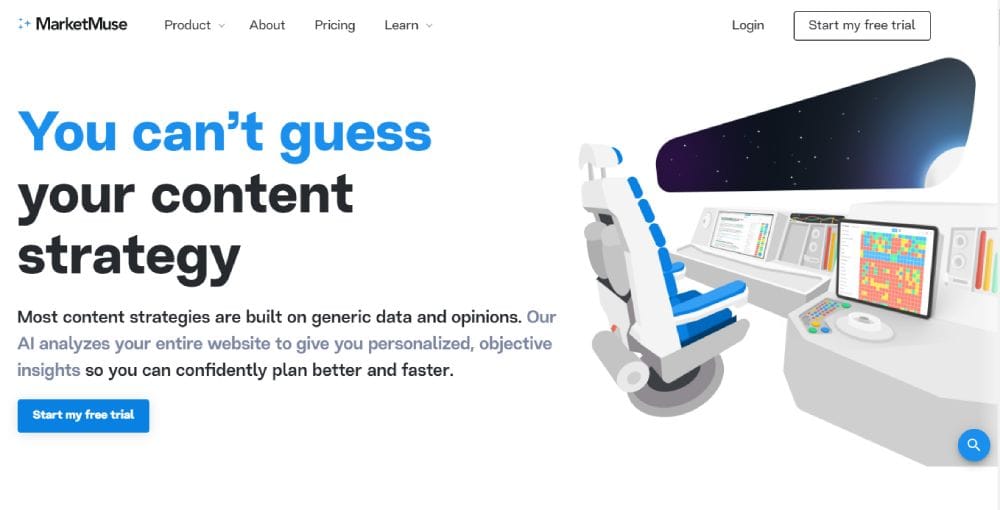
MarketMuse is a platform that offers content audits in less time than manual methods. Their main offering is cluster creation and analysis, which helps create groups of linked content. This allows you to address an issue from different angles and improve search visibility.
MarketMuse provides a personalized expansion pack for content, allowing users to input a subject and receive SEO-optimized variations of that topic. This software streamlines the brainstorming process, saves time, and assists with keyword research, competitive content analysis, and on-page SEO optimization.
Features:
- An analysis of content competition.
- Difficulty scores are provided based on the individualized characteristics of your website and its content.
- Content briefs provide detailed outlines for achieving word count goals and KPIs by covering specific topics.
- Here are some suggestions for internal link-building and external link ideas.
- The content performance is predicted.
- Checks and records current and previous content.
G2 Score: 4.6/5
Pricing: MarketMuse offers a free option with limited functionality, as well as a standard paid package priced at $149 per month. Custom pricing is also available for premium clients.
8. SEO Powersuite
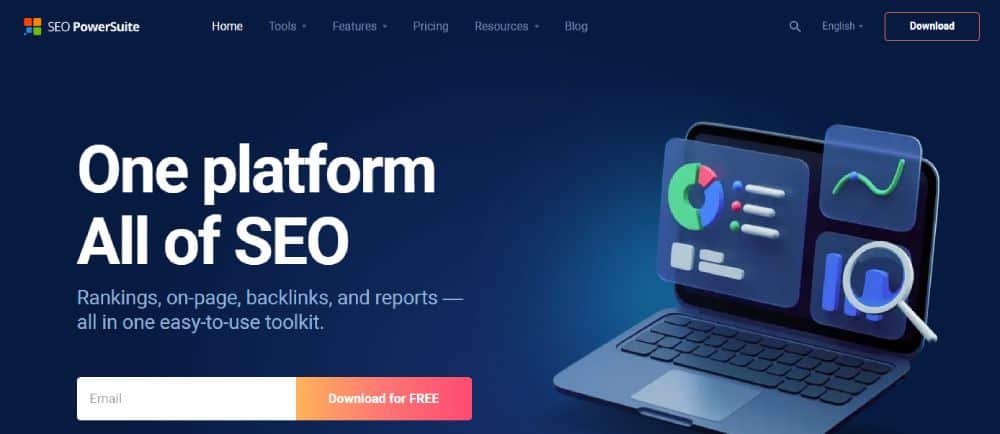
This product offers a comprehensive range of SEO tools, with the on-page SEO audit tool being a standout feature. It functions similarly to Screaming Frog, with its web crawler and URL checker, but also includes additional on-page SEO tools like keyword research and content editors. SEO Powersuite also offers other useful tools such a Rank Tracker, WebSite Auditor, and Link Assistant.
The Powersuite software lacks AI or content planning capabilities, but it effectively covers the fundamental aspects of on-page SEO in a user-friendly manner. It is considered one of the top on-page SEO tools due to its extensive language support and nearly two decades of experience in the industry.
Features:
- The SEO spider is crawling.
- A comprehensive examination of the entire website.
- A Core Web Vitals audit and report will be conducted.
- A robots.txt and sitemap generator is available.
- A visual sitemap generator is available for in-app content optimization.
- The TF-IDF analysis tool is used for analyzing text.
- Our platform offers fully customizable automated SEO reports for website analysis.
G2 Score: 4.5/5
Pricing: There are different licensing options available for the software, starting with a free license and then extending to a Professional License for $299/year and an Enterprise License for $499/year. However, it is worth noting that algorithm updates are not included in the pricing and can be quite costly, as several reviewers have pointed out.
9. Google Lighthouse Audit
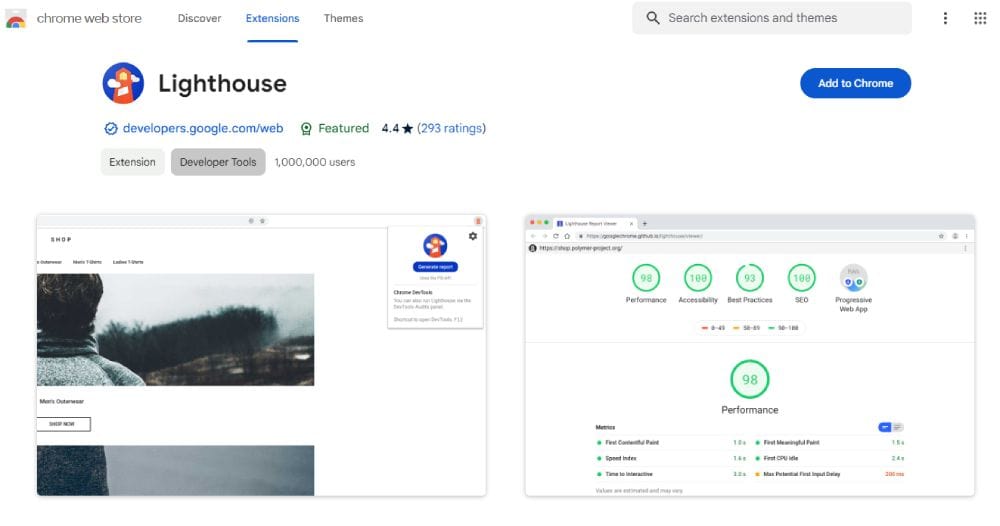
One notable on-page SEO tool is Google’s free web page auditing tool, which not only focuses on SEO but also provides reports on overall performance, accessibility, and other factors.
The tool is accessible through four different workflow systems, allowing users to select the option that best suits their needs. However, the Chrome extension option provides a particularly convenient experience. Users can input the desired URL for analysis, and Google will conduct multiple audits to identify areas that require improvement. The tool also offers the choice between an accessibility audit or a comprehensive report, which is essential for SEO purposes.
However, there are some issues with this software. It is recommended to run it programmatically for larger audits, rather than solely relying on the extension. The advantage is that it is free and can provide valuable assistance to those who are new to SEO.
Features:
- The site is assessed for performance, accessibility, best practices, and SEO.
- Performance metrics measure speed, such as first contentful paint and speed index.
- An accessibility audit checks if your page is readable and provides information on color contrasts and font size.
- A best practices audit reveals browser errors.
- The SEO audit provides all the necessary information about SEO, including meta descriptions, page titles, and linking attributes.
G2 Score: NA
Pricing: Free
Wrapping Up: The Best On-Page SEO Tools
The best on-page SEO tools for your website depend on your goals and KPIs. Some tools can work together effectively. For example, you can start by using Google Search console to check how your site appears on SERP if you want to improve an established site. You can then perform an overall audit using a crawler like Google’s free Lighthouse audit or a tool like Screaming Frog.
Some of these tools are free, while others like Marketmuse and Clearscope have a significant cost. The remaining tools fall somewhere in the middle.For further information on on-page SEO, please refer to our comprehensive Ultimate Guide to On-Page SEO.
FAQs Related to On-Page SEO Tools
What’s the difference between technical SEO and SEO?
The term “technical SEO” is commonly used by writers to describe a specific aspect of SEO that they believe requires specialized knowledge. It is a subjective term, similar to “advanced SEO.” On the other hand, “SEO” encompasses the entire field of search engine optimization. Therefore, discussions about SEO may cover material suitable for beginners, intermediate-level learners, or digital marketing professionals.
What’s the difference between on-page SEO and off-page SEO?
“On-page SEO” encompasses various elements of a web page that can influence SEO and are within your control. These elements comprise page loading speed, content quality, logical structure, title tag, meta description, image and video alt tags, Schema markup, and appropriate utilization of a targeted keyword.
“Off-page SEO” encompasses factors such as backlinks, guest posts, and brand mentions on other websites, which all play a crucial role in search engine rankings.
What free SEO tools do you recommend?
The AIOSEO Analyzer is a free Chrome extension that can be used to expedite SEO checks. Additionally, we suggest utilizing the free AIOSEO SEO Analyzer to perform a comprehensive site audit.
The Ahrefs toolbar is a free on-page SEO checker. It gives you SEO metrics for the pages you visit, such as keyword difficulty, search volume, and SERP positions. You can also receive an SEO report for any page. Site owners with intermediate or advanced knowledge might find the canonical URL check and information on directives for crawlers in HTTP headers and meta tags useful.
Another recommended tool is SerpRobot’s free SERP checker, which can be utilized to determine the page ranking of an article.
I can’t afford Clearscope. Can you recommend an alternative?
Content analysis tools such as Clearscope are commonly used by teams managing multiple websites. However, some site owners may require a more efficient approach. Here is an alternative method that we have tested and successfully used. It has allowed us not only achieve top rankings in Google but also capture the featured snippet for the keywords we targeted.
- Use long tail keywords: When selecting a keyword (main topic) for an article, it is recommended to use a long tail keyword. Long tails are easier to rank for due to lower competition. While long tails may generate less traffic, they tend to attract higher quality traffic resulting in increased conversions.
- Scout out the competition: To see your competition, search your target keyword in Chrome Incognito. Look at the first page of search results. Take note of any related questions or problems people are trying to solve. Addressing those issues in your article can make it more helpful to readers.
- Focus on quality: Google rewards quality content, so give your best effort. Start by creating an outline to stay organized. Write an article that is more helpful or interesting than the top-ranking ones. This could mean being easier to understand or more comprehensive. Before publishing, review and revise your article multiple times.
Remember to review your on-page SEO.




